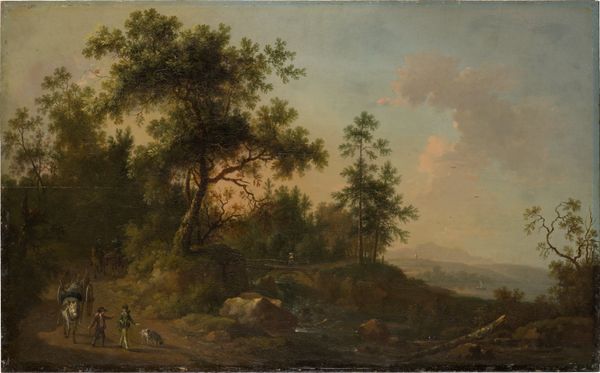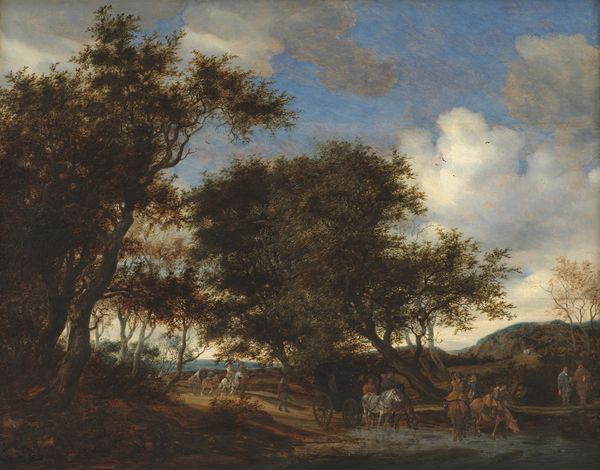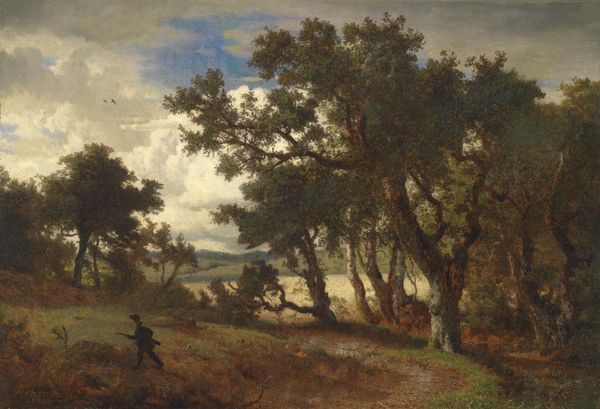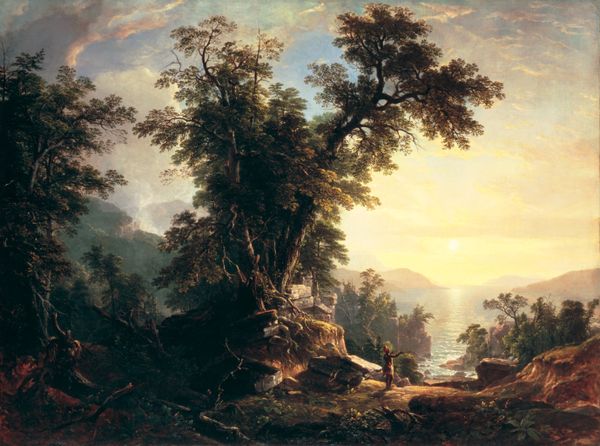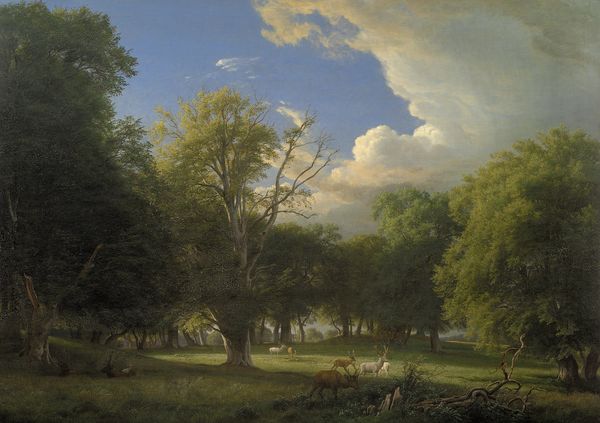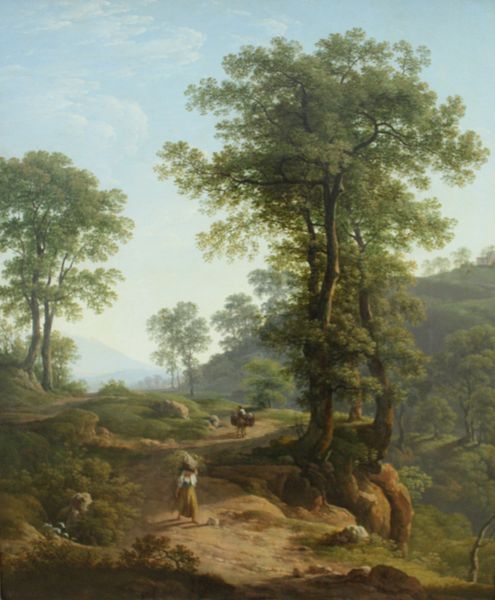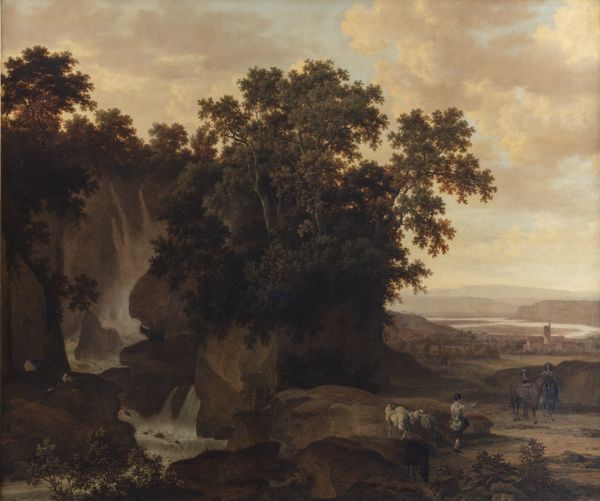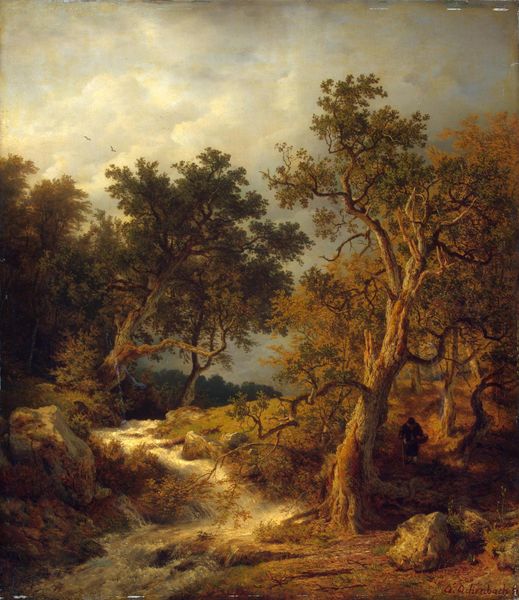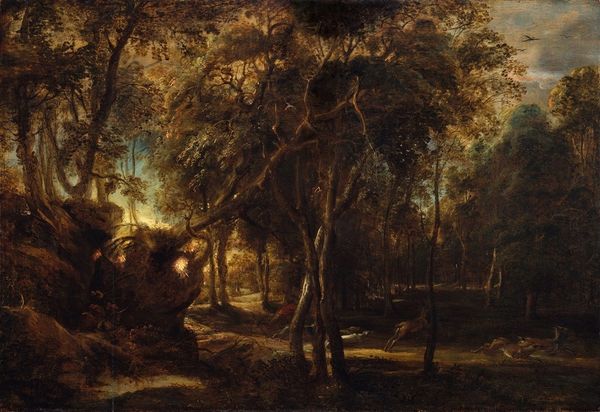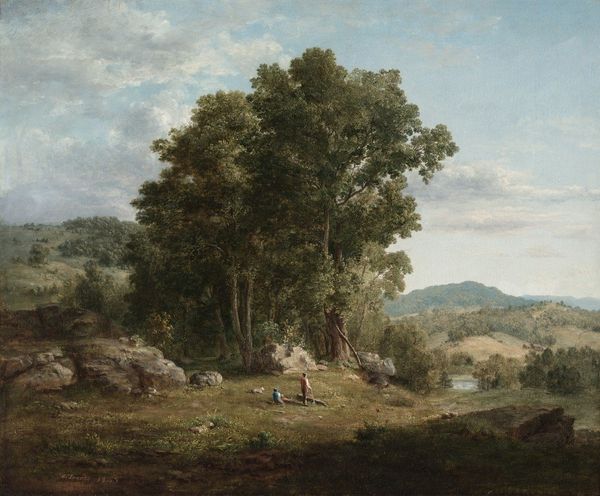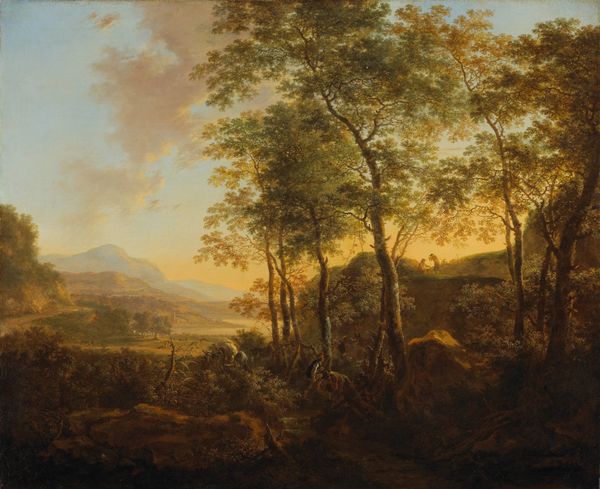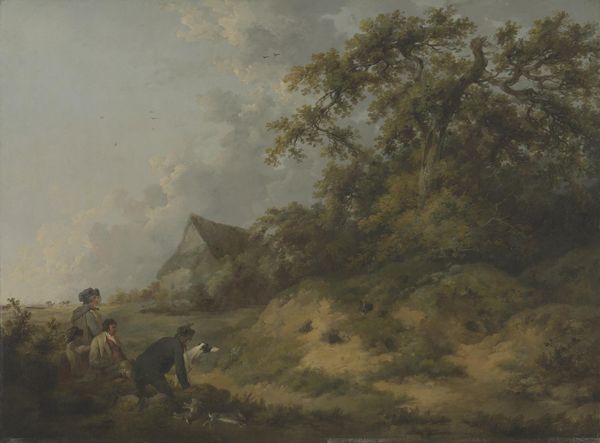
painting, plein-air, oil-paint, canvas
#
painting
#
plein-air
#
oil-paint
#
landscape
#
charcoal drawing
#
oil painting
#
canvas
#
romanticism
Dimensions: 67.5 cm (height) x 89 cm (width) (Netto)
Editor: So, here we have Johann Mohr's "Landscape in Tyrol," painted sometime between 1823 and 1843, rendered in oil on canvas. I’m struck by how it simultaneously feels expansive and intimate. There's this vast landscape, yet a small scene unfolds in the foreground, pulling me in. What's your initial interpretation of the piece? Curator: This painting really speaks to the rise of landscape as a significant genre in the Romantic era, particularly its intersection with nationalism. "Landscape in Tyrol" isn't just a pretty scene, it is a statement. How do you think portraying the Tyrol region specifically contributes to this? Editor: I hadn’t considered the location so intently! Perhaps focusing on Tyrol—an area with distinct cultural identity and history—imbues the painting with a sense of regional pride, a visual assertion of Tyrolean identity. Curator: Precisely! Think about the period. Landscape paintings became vehicles for expressing cultural identity, subtly or overtly staking claims to territory. The figures huddled by the fire—are they romanticized peasants, symbols of an unspoiled, authentic way of life rooted in that land? What socio-political meaning do you attribute to these "ordinary" people represented within this kind of environment? Editor: Hmm, that makes me see their presence differently. They aren't just part of the scenery; they are connected with an idea that the region and people who lives in the region form some unbreakable cultural heritage! Curator: Exactly, the choice to include them elevates what may be simply a plein air practice of using "nature" for the study of "true art," with that of "painting" that gives social recognition to "country." Editor: This has really shifted my understanding, it makes you realize how loaded even seemingly innocent landscapes can be with cultural and political meaning. Thank you! Curator: Indeed, art rarely exists in a vacuum. Understanding the historical and cultural context is key to unpacking its deeper layers.
Comments
No comments
Be the first to comment and join the conversation on the ultimate creative platform.
